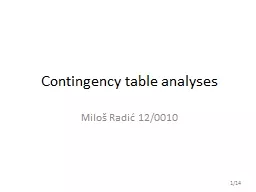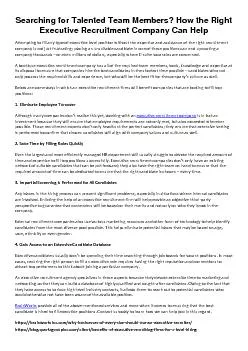PPT-Lecture 5 Agenda Basic Contingency Table Analysis
Author : contessi | Published Date : 2020-06-23
RxC Contingency Tables Pearson Chi square test of association Stratified 2x2 tables Cochran Mantel Haenszel test of association Breslow Day test of interaction
Presentation Embed Code
Download Presentation
Download Presentation The PPT/PDF document "Lecture 5 Agenda Basic Contingency Table..." is the property of its rightful owner. Permission is granted to download and print the materials on this website for personal, non-commercial use only, and to display it on your personal computer provided you do not modify the materials and that you retain all copyright notices contained in the materials. By downloading content from our website, you accept the terms of this agreement.
Lecture 5 Agenda Basic Contingency Table Analysis: Transcript
Download Rules Of Document
"Lecture 5 Agenda Basic Contingency Table Analysis"The content belongs to its owner. You may download and print it for personal use, without modification, and keep all copyright notices. By downloading, you agree to these terms.
Related Documents














